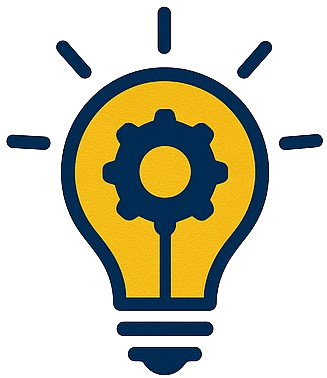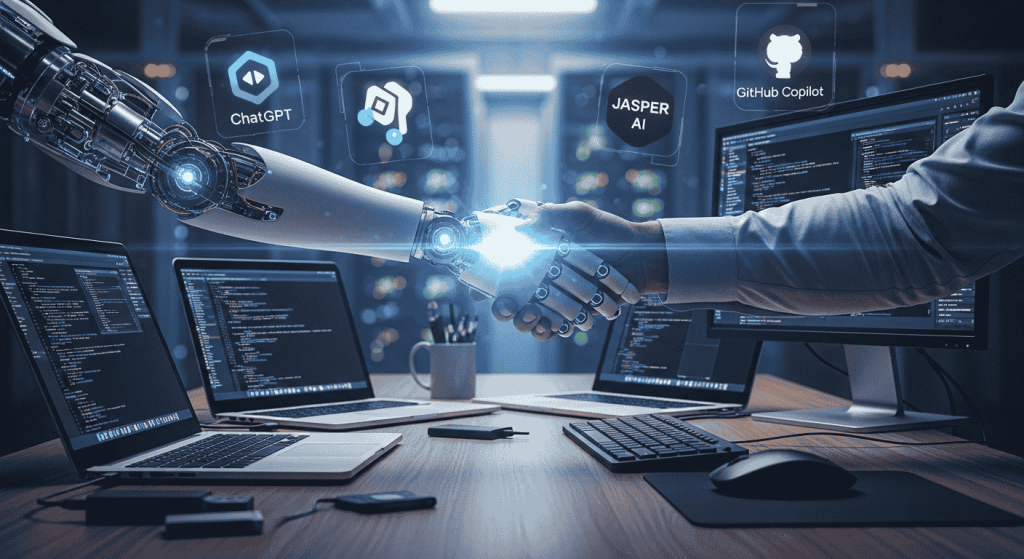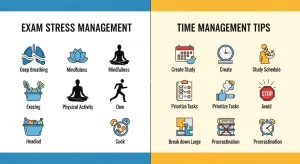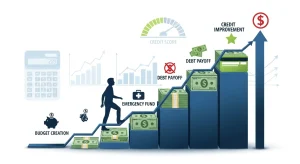Introduction: The Age of AI Has Arrived
The rapid rise of artificial intelligence tools is transforming industries at breakneck speed. From writing emails to analyzing data, AI tools that replace jobs are no longer a futuristic idea—they’re today’s reality. But this shift doesn’t have to spell doom. If you know how to use AI tools, you can actually make them work for you, not against you.
In this article, we’ll explore the AI tools replacing jobs, the types of jobs AI will replace, and how you can adopt these tools to stay competitive.
Jobs AI Will Replace by 2025
AI isn’t targeting only one sector. It’s spreading across industries like wildfire. Here are some jobs AI will replace (or significantly transform) in the coming years:
| Job Role | Risk of Automation | Suggested AI Tool |
|---|---|---|
| Customer Service Agents | High | ChatGPT, Ada, Intercom |
| Data Entry Clerks | Very High | UiPath, Microsoft Power Automate |
| Copywriters & Content Creators | Medium-High | Jasper AI, Copy.ai, Grammarly |
| Translators | Medium | DeepL, Google Translate |
| Basic Coders | Medium | GitHub Copilot, Replit Ghostwriter |
Top AI Tools That Will Replace Your Job (and How to Use Them)
🔹 1. ChatGPT (OpenAI)
Use Case: Customer support, writing, research
Why It’s Replacing Jobs: Automates human conversation and written content.
How to Use It:
-
Draft emails, blogs, and reports
-
Automate FAQs for customer service
-
Translate languages or summarize documents
🔹 2. Jasper AI
Use Case: Copywriting, marketing content
Why It’s Replacing Jobs: Can write SEO blogs, social media captions, and ads
How to Use It:
-
Input topic and tone
-
Generate high-quality content in minutes
-
Edit for personal style
How to Start a YouTube Channel & Make Money
🔹 3. Midjourney / DALL·E
Use Case: Graphic design, branding
Why It’s Replacing Jobs: Replaces basic designers for ads and visuals
How to Use It:
-
Enter prompt for visual ideas
-
Create unique graphics for blogs and ads
-
Modify outputs for branding consistency
🔹 4. GitHub Copilot
Use Case: Code generation
Why It’s Replacing Jobs: Assists or replaces junior developers
How to Use It:
-
Auto-suggests code as you type
-
Debugs simple issues
-
Speeds up development workflows
🔹 5. Descript
Use Case: Audio and video editing
Why It’s Replacing Jobs: Reduces need for full-time editors
How to Use It:
-
Drag and drop for podcast/video editing
-
Auto-remove filler words
-
Use AI voice cloning
How to Maintain a Happy Relationship
How to Adapt and Thrive in the AI Job Revolution
AI isn’t just about losing jobs—it’s about evolving with technology. Here’s how to make the shift:
✅ Upskill with AI
-
Learn how to use AI tools specific to your industry
-
Take short courses on automation tools and prompt engineering
✅ Become the AI Operator
-
Instead of fearing AI, operate and manage AI tools
-
Humans are still needed for strategy, emotion, and supervision
✅ Use AI to Save Time
-
Automate repetitive tasks
-
Focus on creativity and problem-solving
-
Increase productivity and value
Frequently Asked Questions (FAQs)
❓What jobs are most at risk from AI tools?
Jobs AI will replace include data entry, customer service, basic graphic design, and junior coding roles. Repetitive, rule-based jobs are most vulnerable.
❓Can AI fully replace human jobs?
No, AI can’t replace creativity, empathy, or leadership. While many roles are being automated, humans will still play a vital role in managing and supervising AI tools.
❓How can I benefit from AI instead of being replaced?
By learning how to use AI tools, you can increase efficiency, reduce repetitive work, and shift to higher-value tasks. Becoming familiar with automation tools gives you an edge in the job market.
Best Exercises to Lose Belly Fat
Conclusion: Don’t Compete with AI—Collaborate with It
AI isn’t your enemy. It’s a tool. The best way to stay ahead is to embrace AI tools that replace jobs, and use them to your advantage. Upskill, adapt, and become indispensable—not because of what you do, but how well you do it with AI.











